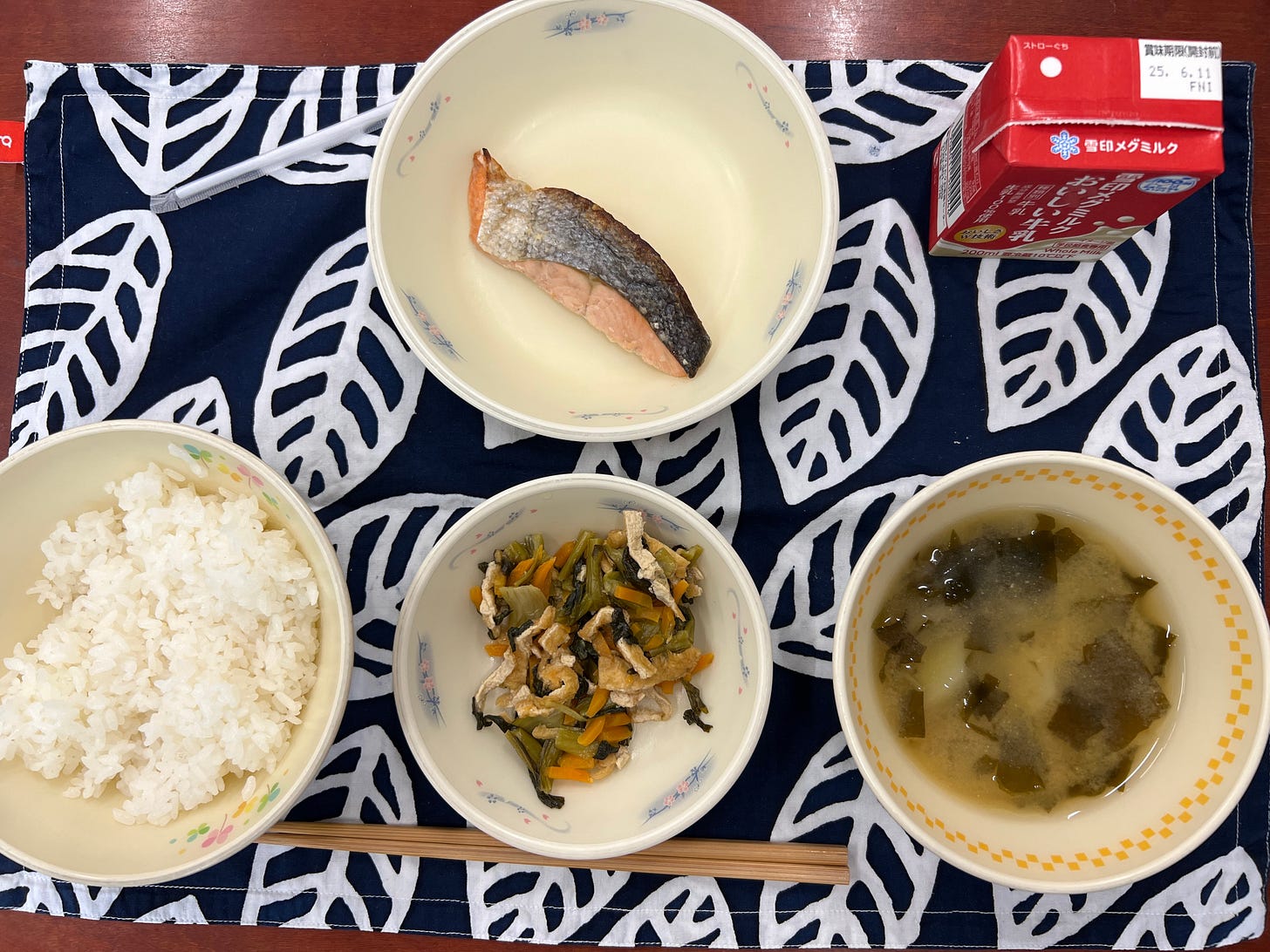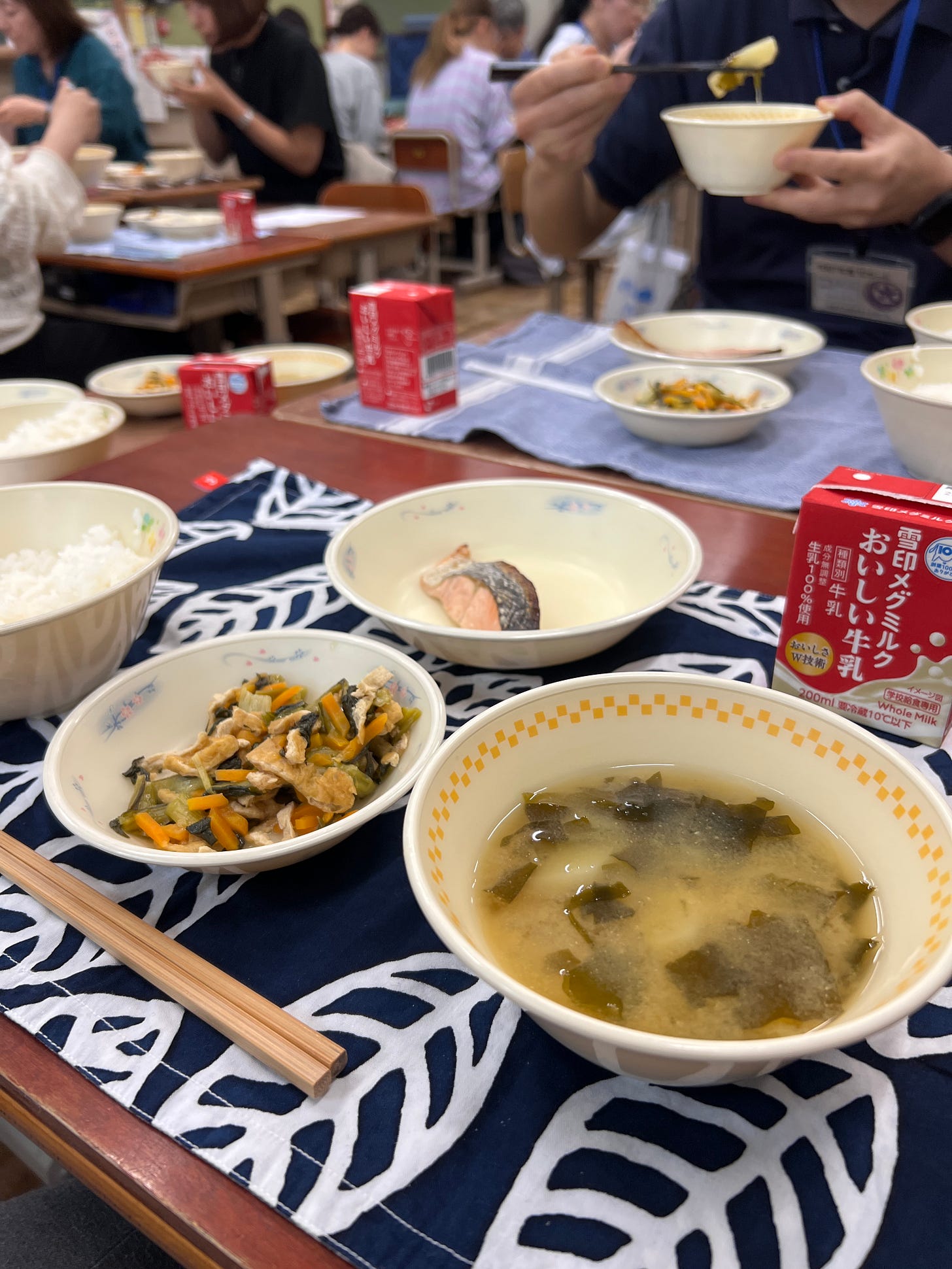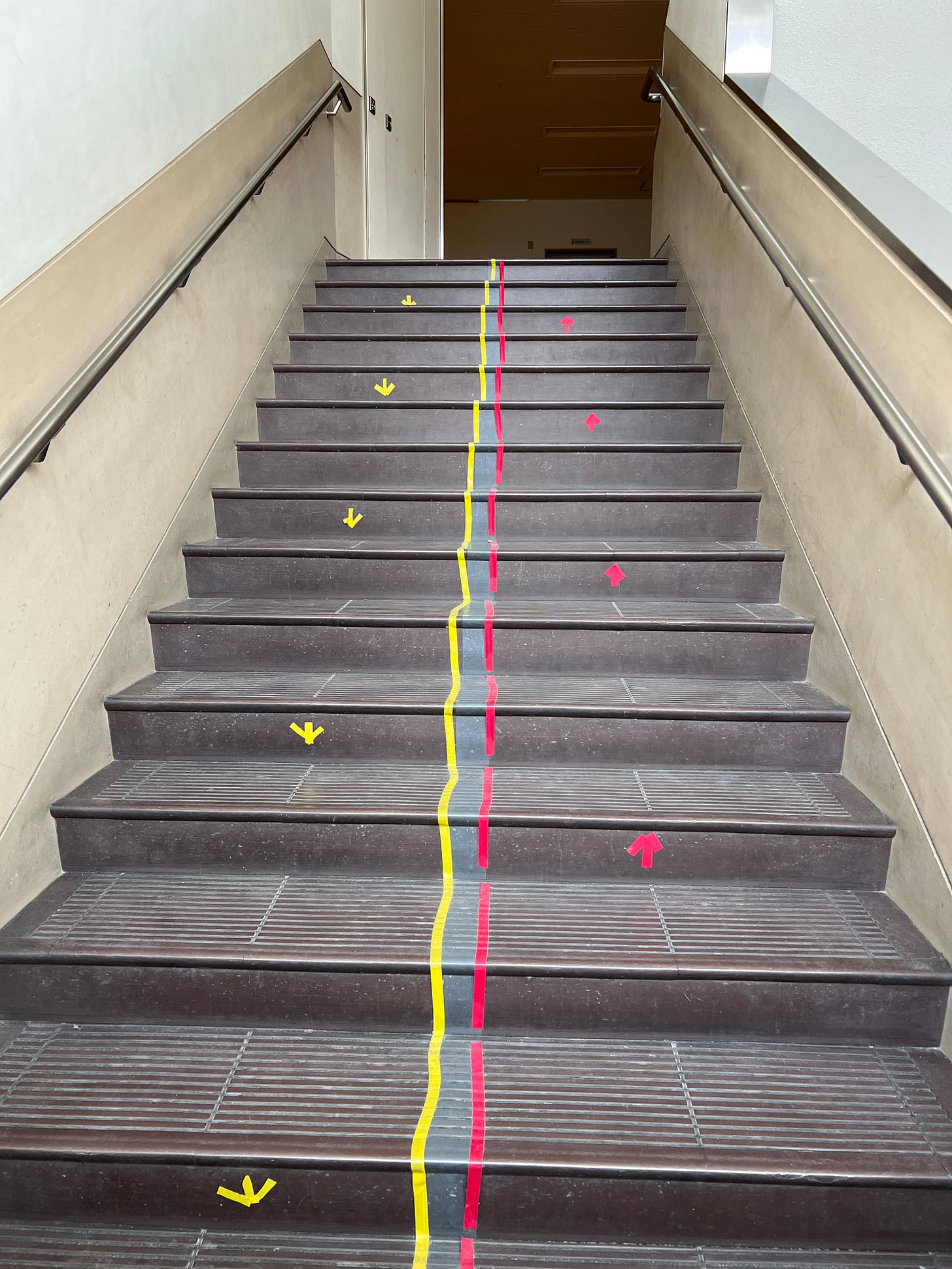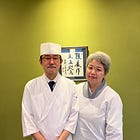72 Seasons of Tea | Instagram | LinkedIn | About
It’s been almost a year since we moved our half-Japanese eldest daughter into a Japanese public school. We are incredibly proud of how far she’s come. From barely knowing the language to making friends and settling in beautifully.
Recently, we got to experience a wonderful 2-hour school lunch tasting event organized by her school’s Parent Teacher Association.
Like everything in Japan, one word sums it up: perfection.
It was a useful Japanese language immersion opportunity for me to listen in (probably understanding roughly 15-20% of what was said) on the entire event solely in Japanese and to interact with other Japanese parents in their language.
At this point, with a strong desire to communicate and to be understood, I am far less embarrassed by spitting out rough Japanese in broken phrases.
Primary school lunches are a big deal in Japan so it was interesting to hear more on the school’s philosophy and values, trends and evolution of school lunches in Japan, and to understand the numerous support system behind making these school lunches happen.
The 7 principles of school lunches
Maintaining and improving health through proper nutrition.
To deepen understanding of food in daily life, cultivate judgment to maintain a healthy diet, and develop desirable eating habits.
To enrich school life and foster a positive sociability and cooperative spirit.
To deepen understanding that diet is based on the blessings of nature, and to cultivate a spirit of respect for life and nature, as well as an attitude that contributes to environment conservation.
To deepen understanding that eating habits are supported by the various activities of people involved with food and to cultivate an attitude that values hard work.
To deepen understanding of the excellent traditional food culture of the country and each region.
To provide a correct understanding of food production, distribution and consumption.
Japanese school lunches are based on the 一汁三菜 ichiju sansai concept, which means one soup and three dishes including rice.
In this school, the menu is planned at least five months in advance, with 8 cooks preparing meals for 1,000 students from primary grades 1 to 6. A massive undertaking!
In the kitchen, the 8 cooks prepare everything from scratch for 1,000 primary students. This includes hand-chopping cabbage to washing the dishes. For each student, each school lunch is fairly reasonable, costing about 300 yen = 260 yen paid by the student while the city covers the remaining 40 yen.
The primary carbohydrate staple is mostly rice (with the exception of bread servings on Wednesdays), with oversight of the city prefecture.
Main ingredients and seasonings are designated through the City School Lunch Association.
While milk is provided by the National Agricultural Cooperative Association.
In groups, students in each class take turns carrying dishes to their classrooms, then serve and eat together. Taking up these roles collectively foster a strong sense of responsibility and community among the students.
The use of local food ingredients in school lunches are encouraged, such as Kyoyasai 京野菜 or Kyoto vegetables:
Kamo nasu 加茂茄子 - eggplant
Fushimi togarashi 伏見唐辛子 - Traditional Japanese sweet pepper (not spicy)
Mizuna 水菜 - Japanese mustard greens
Manganji togarashi 万願寺唐辛子 - Another type of sweet pepper
Kujo negi 九条葱 - Japanese green onion or scallion
Kintoki ninjin 金時人参 - Traditional sweet red or deep orange carrot
Shogoin daikon 聖護院大根 - Traditional Japanese radish variety
Hanana 花菜 - Greens with edible flower buds
Likewise, the use of shun no mono 旬の物 seasonal food ingredients are celebrated in classrooms through these school lunches:
Spring 春: Takenoko 竹の子 (bamboo shoots), Nanohana 菜の花 (rapeseed blossoms or edible flower greens)
Summer 夏: Nasu 茄子 (eggplant), Tomato トマト
Fall 秋: Kuri 栗 (chestnuts), Kaki 柿 (persimmon)
Winter 冬: Horenso ほうれん草 (spinach), Hakusai 白菜 (Napa cabbage)
What’s most impressive is that all students, even the first graders, must tear open each milk carton after drinking, then sort them out so these can be sent for recycling to be made into toilet paper. Doing so all by themselves after each school lunch.
In Japan, the pursuit of excellence and perfection truly begins early - at home and in schools!











Appreciated this glimpse at a school in Japan! A lot similar with the private schools here in Shenzhen. And salmon for lunch is always going to be popular. 🙏🏻💖
That’s so interesting about how the respect for food and nature is cultivated through meals. If only that was the same in UK! (With addition of being plant-based too!)